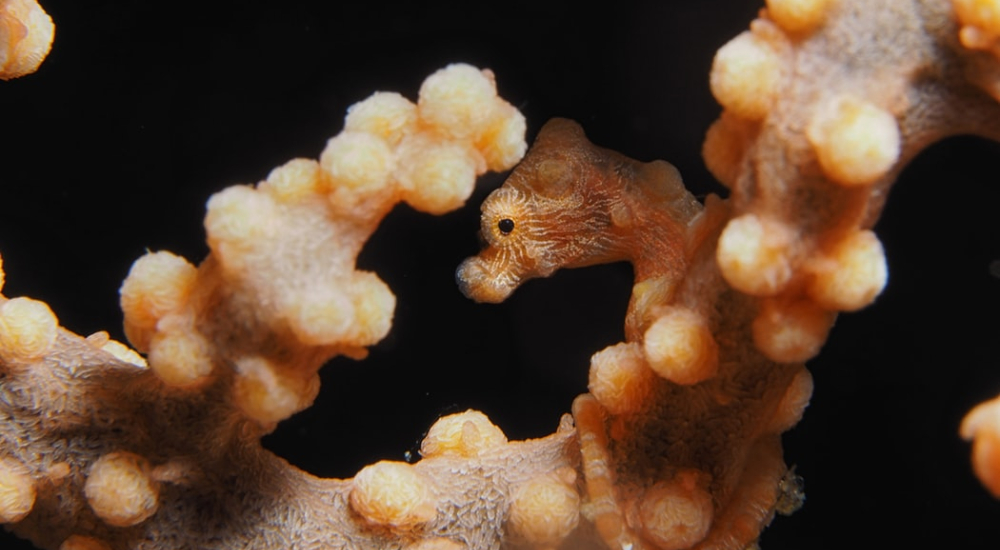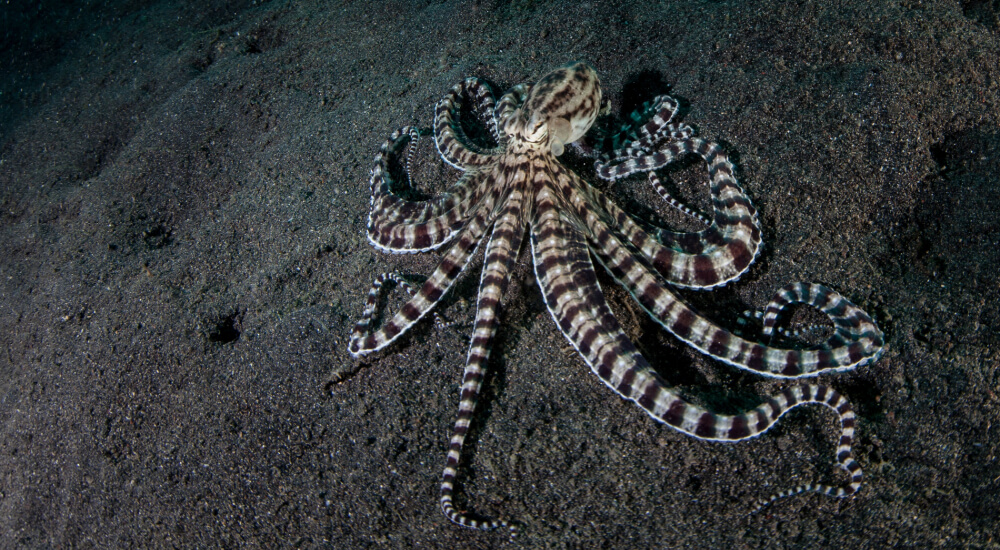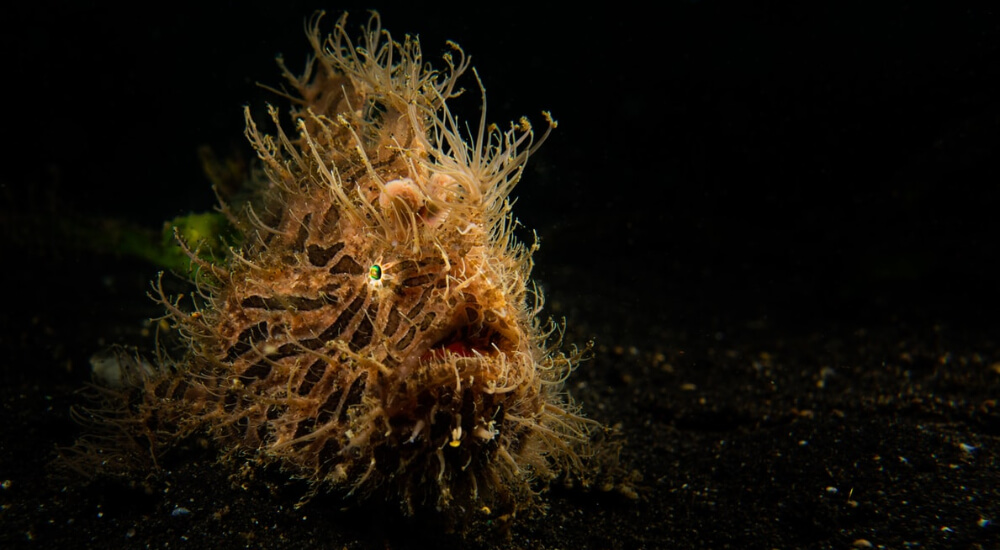Coral reef diving is an all-time favorite to most recreational divers. Those vibrant, beautiful underwater reefs filled with coral of all shapes and sizes attract travelers from all parts of the world. But not all coasts are bordered by reefs and not all dive sites feature colorful fields of coral. Luckily, this doesn’t mean those places don’t offer other attractions. Some of the best experiences you can ever have as a diver involve something known as “muck diving”, which we can all agree it does not sound too exciting, but it’s worth it. Here’s why.
What Is Muck Diving?
Muck diving is a term used to describe a type of diving that takes place on dive sites covered in sediment. This sediment may be sand, silt, natural debris (coral rubble and dead coral) or a mixture of those things. It is believed that the phrase was coined by underwater photographer Bob Halstead, who used the term “muck diving” to describe his dives in less attractive marine environments but filled with exotic creatures. Whether he was the first or not, there’s no knowing, but one thing’s for sure – many others have also been curious to see what treasures lie in the seemingly barren dive spots. It’s also worth noting that muck diving isn’t exclusive to volcanic environments; it can also be done in areas covered in seagrass, rubble or small rocks, and even places with a lot of garbage.
Why Go Muck Diving?
We can all agree that muck diving is not everyone’s cup of tea. Some people are turned off by the idea of diving in silt or debris, but muck diving is not about aesthetics or what’s on the outside, for that matter; it’s about putting your sense of observation to the test. When you’re out muck diving, the focus is on marine life. The fun of it is to look for the critters and larger animals that hide in the silt. Still, muck diving is not the same thing as macro diving, although some divers may use the terms interchangeably. Muck diving is just another rewarding type of macro diving.
What Types of Creatures Can You See?

A pygmy seahorse spotted in Anilao, the Philippines
Muck dive sites are popular especially among wildlife photographers searching for the perfect shot. Rare nudibranchs, frogfish, cockatoo waspfish, stargazers, and other strange creatures that are less common on other sites can be found on muck dives. Snake eels, burrowing octopus, jawfish, tube worms, gobies, harlequin shrimps, crocodilefish, flamboyant cuttlefish, spiny tiger shrimp, mantis shrimp, paddle flap rhinopias, bobtail squid, hermit crabs, arrow crabs, and flatworms are also common encounters throughout the Asian continent, which is where you’ll find the best muck dive sites in the world.
Diving Conditions at Muck Dive Sites
If you’ve never muck dived before, that first glimpse into a muck dive site will seem like something completely different from what you’ve tried before. Forget about crystal-clear waters, as visibility is often poor when muck diving. The bottom is covered in loose sediment that’s easily stirred. Nonetheless, once your eyes adjust to the low visibility, you won’t be too bothered by it, as you’ll be inches away from the seabed, looking for signs of life. And it’s easier to find critters here, with the lack of coral growth to camouflage them.
True muck dive sites are typically located in areas where there is some volcanic activity. Volcanic ash can deposit iron, which in turn encourages phytoplankton growth, with effects throughout the food chain. This would explain the proliferation of “unusual” species which you generally see at these sites. These creatures have learned to adapt to this barren environment, whether through behavioral, dietary or genetic changes.
Muck Diving Tips for Beginners
- Look but don’t touch. Leave the animals where you found them and do your best not to manipulate or touch anything. We understand it may be tempting to move the critters to get that perfect shot, but this can be damaging for both the animals and yourself, as some of these creatures are venomous and can inflict painful wounds upon divers.
- Don’t stir up the sediment. You’ve probably seen a lot of muck diving videos where divers stir up the silt on purpose – some dive operators actually encourage this behavior, but this will only cause a sandstorm that will ruin visibility for you and your fellow dive buddies. Furthermore, it can displace the marine life hiding under the silt, and as we always say: whatever you do, do not harass the animals in any way.
- Improve your buoyancy. Good buoyancy is essential when practicing all types of diving, but when it comes to muck diving, it really is a must. Black sand is different from white sand because the particles are typically finer. And as previously stated, once the silty bottom is disturbed, it can bring visibility close to zero. Silt can take a long time to resettle.
- Use a muck stick properly. Muck sticks are great tools when used correctly because they can help reduce your impact on marine life. With the tip of the stick inserted in a lifeless spot, divers can then use the tool to maintain an optimal balance and keep their fins up when observing or photographing animals. Unfortunately, some divers use the muck stick to tease or manipulate animals into a better position for taking pictures.
- Try to avoid strobes. Speaking of taking pictures, do your best to avoid the use of underwater flash, especially with species such as seahorses and pipefish that don’t have eyelids. While it’s still up for debate whether or not strobes have an impact on marine life, many photographers have noted that some species seemed to show signs of stress when the flash was activated.
- Be considerate. During a muck dive, you’ll most likely be joined by a few other divers. Don’t hover too much over one animal and let others take their turn at photographing or admiring the subject.

A mimic octopus crawls across the black sand seafloor of Lembeh Strait, Indonesia
Popular Muck Diving Destinations
Milne Bay, Papua New Guinea
Papua New Guinea is considered the birthplace of muck diving, and for good reason. Milne Bay, in the southeastern tip of Papua New Guinea, offers the best diving when it comes to the variety and abundance of critters. Ghost pipefish, seahorses, flatworms, frogfish, mandarin fish, cuttlefish, various species of nudibranchs, and even the hard-to-find rhinopias can be seen here.
When to visit: September to April
Lembeh Strait, Indonesia
Indonesia is renowned for having some of the best muck dive sites in the world, with Lembeh standing out as one of the muck diving capitals of the world. Rare macro photography subjects include frogfish, juvenile humpback batfish, and cockatoo waspfish. Lembeh is rich in black volcanic sand which is one of the factors that contributed to the abundance of species.
When to visit: Year-round
Anilao, Philippines
Just as Indonesia and Papua New Guinea, the Philippines lie along the Coral Triangle, an area which holds the most biodiverse waters on Earth. Located just a few hours south of the capital city of Manila, Anilao is the country’s hot spot for muck diving. Almost every variety of juvenile fish and critter imaginable can be found here. Blue-ringed octopus, hairy frogfish, rhinopias, and pipefish are just some of the creatures you can see on many of the muck dives in the region.
When to visit: October to June
Mabul, Borneo
Located nearby the world-famous Sipadan, the small island of Mabul was initially outshined by it. Over time, divers realized that Mabul hides lots of small wonders and is worth exploring too. Today, the island is considered a macro photographer’s haven, with all sorts of weird critters hiding in the sand, rocks, and rubble caused by broken coral. Some of the species you can spot here include flamboyant cuttlefish, mimic octopus, blue-ringed octopus, and numerous types of nudibranchs.
When to visit: April to December
If you’re an avid underwater photographer or have a keen interest in critters, muck diving is something you may want to try. Will it bored you? We believe it’s thrilling enough to keep you entertained, but let us know what you think in the comments below.

Fırat ÇELİK says:
Thanks for this article but I think, I’l choose wreck or cave diving… 🙂